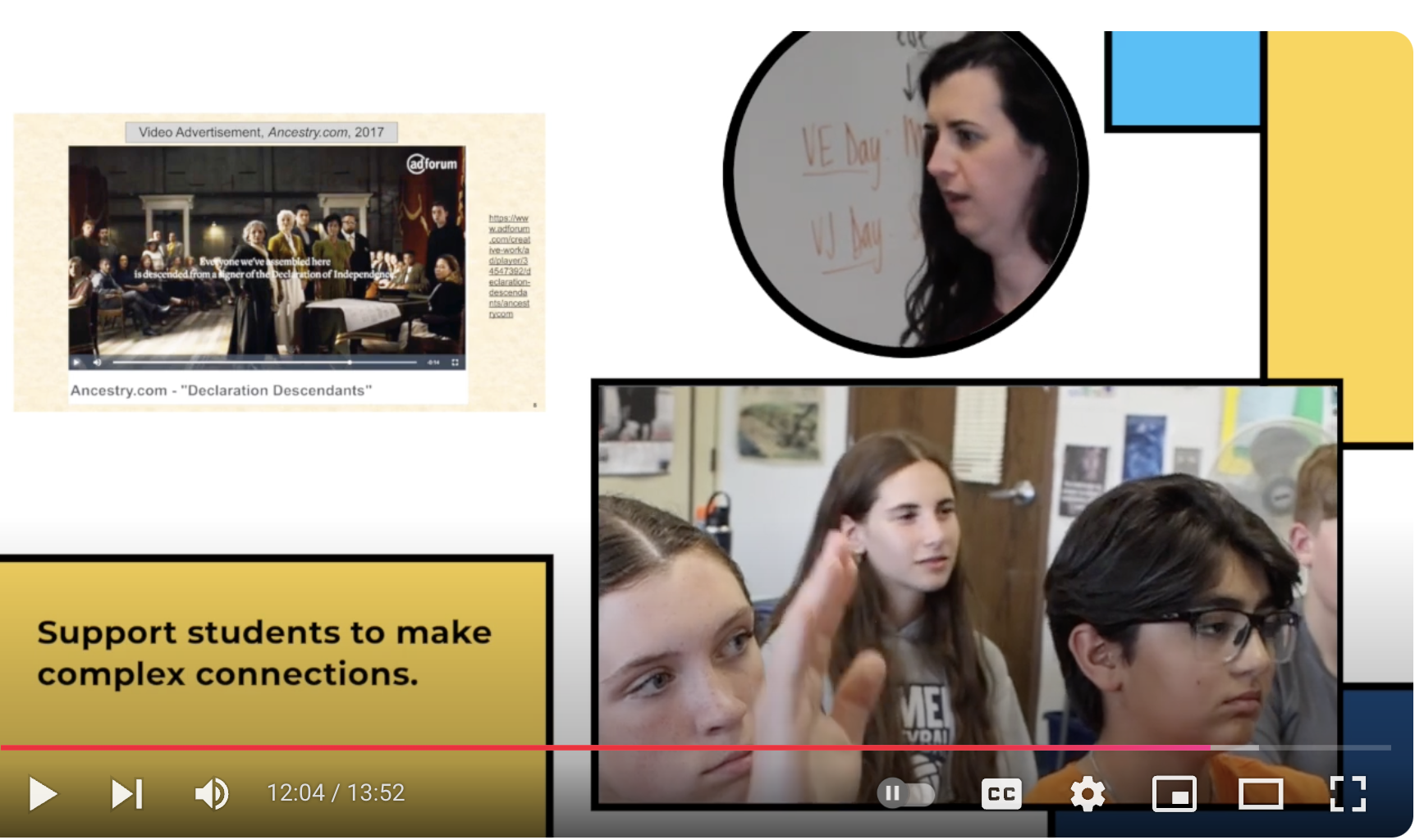Your Search Results (387) sorted by newest
Lewis Hine and Child Labor: Photography of Persuasion
Students will analyze and ask questions about photographs to learn about persuasive techniques, intent, impact, and to reflect on historical context and perspective.
30-60 Minutes
What is Democracy?
Students analyze short videos for messages about different forms of democratic process in the U.S., personal bias and video techniques.
30-60 Minutes
Graphing the Vote: Age, Gender, and Time
Students will tell the stories behind political graphs by: analyzing graphs about generational voting, asking questions about the sourcing and target audience, and reflecting on patterns in youth voting. This lesson has the potential to promote polarization. See the advice in the lesson plan.
30-60 Minutes
Interview: "Media Literacy and Me" Radio Kerry June 28th, 2024
Jerry O'Sullivan, host of the current affairs radio show Kerry Today in Ireland, interviews Executive Director Cyndy Scheibe to discuss the need for media literacy in public schools (in Ireland and in the U.S.), and the role that Project Look Sharp's resources can play in supporting Irish teachers and students.
Download
Constructivist Media Decoding
Media Literacy Lesson Design
Critical Thinking And The News
Assessing Credibility & Bias
Civics
Chris Sperry, Prescription for an Infodemic, a pedagogical response in an era of fake news, In Victor Strasberger (Ed.), kids and today’s Media: A careful analysis and scrutiny of the problems, volume 2, New York: Rowman and Littlefield, 2021.
In this chapter from the 2021 book, Kids and Today’s Media, Chris Sperry lays out Project Look Sharp’s approach to disinformation. After a look at the historical context of our country’s “epistemological crisis” and the role of confirmation bias, Chris makes the case for media literacy and specifically Constructivist Media.
Download
Constructivist Media Decoding
Media Literacy Lesson Design
Critical Thinking And The News
Assessing Credibility & Bias
Social Studies
English Language Arts
Health
Pre-service Teacher Education
Civics
Declaration of Independence: Sourcing, Credibility, & Bias
Middle School teacher, Mary Kate Lonergan, leads her students through a decoding of domestic and international newspapers - using the Project Look Sharp lesson: “Storming the Capital” - to analyze media construction and bias in news coverage. (Total Time: 8:57) Published 2023
View
Constructivist Media Decoding
Assessing Credibility & Bias
Social Studies
Pre-service Teacher Education
Civics
The Immigration Debate: Trump vs Harris
Students analyze political ads from the 2024 presidential campaign for messages about immigration, media construction, and our own interpretations.
15-30 Minutes
What is a Campaign?
Students analyze historic and contemporary campaign media for messages about purpose, media types and democratic process.
30-60 Minutes
Satirizing Trump and Harris - Comedy, Bias, and Impact
Students explore political satire through the analysis of comedy sketches related to the 2024 presidential debate between Kamala Harris and Donald Trump.
15-30 Minutes
Messaging Masculinity in the 2024 Presidential Campaign
Students analyze speeches and analysis from the 2024 Republican and Democratic conventions for messages about defining masculinity, political campaign messaging and identity as a factor in media interpretation.
30-60 Minutes
Harris vs Trump: Whose Language, Whose Issues?
Students analyze webpage issue lists to identify which are from the Harris and which are from the Trump campaigns, reflecting on language choices, target audience, and their own biases.
15-30 Minutes
Tracking Climate Urgency: 30 years of IPCC Reports
Students analyze short quotes from Intergovernmental Panel on Climate Change reports from 1990-2020 for messages about scientific conclusions and persuasive language related to the climate crisis.
15-30 Minutes
Kamala Harris & Donald Trump Video Biographies
Students analyze Donald Trump and Kamala Harris film biographies for messages about presidential leadership, media creation, and how political bias shapes media interpretation.
15-30 Minutes
How Big is the Crowd? Proportional Reasoning and Critical Thinking
Students use mathematical reasoning to evaluate claims about crowd size for President Trump’s 2016 inauguration, and reflect on confirmation bias when assessing truth claims in the media.
30-60 Minutes
To Break the Glass Ceiling: Analyzing Campaign Ads by Women Running for President
Students analyze political campaign ads for messages about female presidential candidates, historical and cultural context, and techniques of persuasion.
15-30 Minutes
Good Data - Bad Feelings: Graphing Economics, Public Opinion and Media Coverage
Students analyze graphs and media analysis for messages about the relationship between media reporting on the economy and public opinion.
Over 60 Minutes
Media Constructions of the Signing of the Declaration of Independence
Students analyze diverse media forms related to John Trumbull’s famous painting of the signing of the Declaration of Independence for messages about the event, the credibility and qualities of different media forms, and about American history.
30-60 Minutes
Wellness Claims and Social Media
Students analyze social media posts with health/wellness claims and evaluate their credibility.
30-60 Minutes
The History of Cigarette Commercials: Issues of Persuasion and Regulation
Students analyze 3 TV commercials and a PSA for cigarettes from the 1950s-1960s to assess marketing techniques, health messages and gender stereotypes, and then read about and discuss the 1970 congressional ban on cigarette advertising on television.
30-60 Minutes
Deepfakes: What Do We Believe? What Do We Share?
Students evaluate Internet images and videos as fake or true and reflect on how confirmation bias impacts our judgments.
30-60 Minutes




















